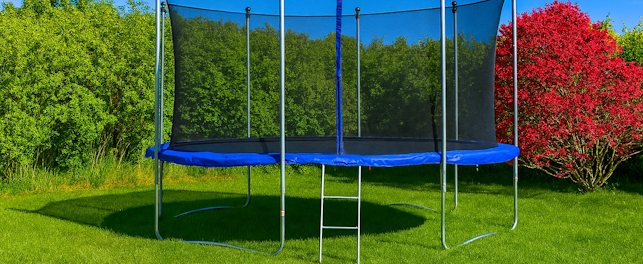SG 098/25
The Council of the European Union (EU) has issued the consensus text for its draft Toy Safety Regulation (draft TSR).
In June 2025, the EU Council published its compromise text with a view to an agreement for its draft TSR (document ST 10091 2025 INIT).
This latest draft TSR contains substantial changes to the Toy Safety Directive (TSD, Directive 2009/48/EC, consolidated version to December 2022).
Key highlights include:
- Replacing the EU declaration of conformity (DoC) with the digital product passport (DPP, Annex VI)
- Emphasizing that toys with artificial intelligence (AI) that require third party conformity assessment are classified as high-risk AI systems under Regulation (EU) 2024/1689 (AI Act). Additionally, interconnected toys with substantial social interactive features (e.g. speaking or filming) or location tracking features are considered as important products with digital elements (Class I) and require to undergo a third-party conformity assessment, unless the manufacturer has applied harmonized standards, common specifications or European cybersecurity certification schemes at ‘substantial’ assurance level
- Requiring maximum impulse noise and continuous noise values to be set for toys that emit a sound (Directive 2003/10/EEC)
- Introducing several new terms and definitions:
- ‘Digital product passport (DPP)’ – a set of data specific to a toy that contains the information set out in Annex VI and is accessible via electronic means through a data carrier in accordance with Chapter IV
- ‘DPP service provider’ – a natural or legal person that is an independent third-party authorized by the economic operator which is required to create a product passport for a toy and that processes the DPP data for that toy for the purpose of making such data available to economic operators and other actors
- ‘Per- and polyfluoroalkyl substances (PFAS)’ – any substance that contains at least one fully fluorinated (CF3-) or methylene (-CF2-)-carbon atom (without any H/Cl/Br/I attached to it)
- Manufacturers need to assure that consumers can easily submit complaints and they must investigate these complaints
- Detailing the obligations for fulfilment service providers (in addition to manufacturers, authorized representatives, importers, distributors and cases where manufacturers apply to other persons)
- Requiring providers of online marketplaces to comply with, inter alia, Articles 30 to 32 of Regulation (EU) 2022/2065 (Digital Services Act) and Article 22 of Regulation (EU) 2023/988 (General Product Safety Regulation)
- Calling manufacturers or DPP service providers to display the link for the Safety Gate Portal for toys that may pose a risk to consumers when the DPP is accessed
- Entrusting the Commission with issuing guidelines to assist small and medium-sized enterprises (SMEs) within 12 months before the date of application of the regulation in establishing a DPP
- Directing the Commission to request an opinion from the European Chemicals Agency (ECHA) on the following substances and adopt delegated acts accordingly in order to adopt their limit values for toys listed in Part A of the Appendix to Annex II:
- Nitrosamines and nitrosatable substances (see Table 1 below)
- Lead, cadmium, mercury and chromium (VI)
- Exempting the following products from the definition of toys:
- Continuously wired child-appealing luminaries
- Paint ball equipment
- Reading and educational books intended for children older than 36 months that do not have play value
- Mandating toys to be manufactured in a manner that 1) they must not cause a risk to the obstruction of the intestines due to expansion of the toy if swallowed, 2) the sounds emitted are not able to impair children’s hearing and 3) the size and strength of magnets or magnetic parts do not pose a risk of intestinal perforation or blockage
- Revising the general ban on toys containing substances that are classified as carcinogenic, mutagenic or toxic for reproduction (CMR substances) in Regulation (EC) No. 1272/2008 on classification, labeling and packaging of substances and mixtures (CLP Regulation, current consolidated version to February 2025), to include the following categories:
- Endocrine disruption for human health (ED HH) category 1 or 2
- Specific target organ toxicity (STOT) category 1
- Respiratory sensitization category 1
- Skin sensitizers category 1A
- Prohibiting per- and polyfluoroalkyl substances (PFAS) if these are intentionally added (restrictions or prohibitions under Regulation (EC) No. 1907/2006 (REACH) or Regulation (EU) 2019/1021 (POP Recast Regulation) take precedence)
- Forbidding bisphenols listed in part D of the Appendix (see Table 2 below). According to preamble point 22a, some of the 34 bisphenols identified by ECHA that should not be present in toys are subject to classification as toxic for reproduction or endocrine disruptors under the CLP Regulation and are covered by the general ban in this regulation. It is important to ban the other remaining bisphenols identified by ECHA that are not covered by other provisions banning their use under this regulation.
- Emphasizing that toys must not have a biocidal function where they would be considered as a biocidal product, or be treated with, or intentionally incorporate, one or more biocidal products, under Regulation (EU) 528/2012
- Revising the requirements for chemical substances. These include, inter alia, the following:
- Restriction of nitrosamines and nitrosatable substances in five categories of toys (see Table 1 below)
- Restricting 14 chemicals in (all) toys – TCEP, TCPP, TDCP, formamide, BIT, CIT, phenol, formaldehyde and aniline, as well as the following new specifications:
- ≤ 0.01 mg/L acrynonitrile migration (polymeric materials)
- ≤ 0.005 mg/L BPA migration
- ≤ 0.07 mg/L butadiene migration (polymeric materials)
- ≤ 0.77 mg/L styrene migration (polymeric materials)
- ≤ 0.01 mg/L vinyl chloride migration (polymeric materials)
- Update on the table of prohibited allergenic fragrances by allowing their presence if technically unavoidable under GMP and does not exceed 10 mg/kg (reduced from the present 100 mg/kg)
- Update the requirements for allergenic fragrances to be listed on a toy, its affixed label, packaging or in an accompanying leaflet, as well as in the DPP, by revising the scope from ‘toys’ to ‘toys intended for children under 36 months or other toys intended to be placed in the mouth if technically unavoidable under GMP’ and does not exceed 10 mg/kg (reduced from the present 100 mg/kg)
- Expands the permitted use of substances under the general prohibition to include cobalt in metal toy components intended to be conduct an electric current (the permitted use of this substance in metal toy components in applications other than to conduct an electric current, such as metal toys, toy jewelry, fidget spinners and magnets, will be adopted later)
- Requires a list of substances and mixtures, including safety data sheets (SDS) as part of the technical documentation
- Allows the use of a pictogram with an exclamation mark as an alternative for the word ‘warning’
It is interesting to note that the migration of 19 elements and their limit values remain unchanged – the provisions to prohibit lead, cadmium, chromium (VI) and mercury, as well as the migration of 15 elements in the revised draft TSR under Communication C/2025/1032 were removed (SafeGuardS 39/25 and references therein)
According to the draft TSR, it will repeal the TSD on the first day of the month following 54 months after the date of entry into force (EIF) of the TSR. A transition period of 30 months is provided after the date of EIF, except for a few provisions that will apply from the date of EIF.
| N-nitrosamines (mg/kg) | N-nitrosatable substances (mg/kg) | |
| a) Toys intended for use by children under 36 months and intended or likely to be placed in the mouth | 0.01 | 0.1 |
| b) Toys intended for use by children under 36 months not covered by a) above | 0.05 | 1.0 |
| c) Toys intended for use by children of 36 months and over and intended to be placed in the mouth | 0.05 | 1.0 |
| d) Balloons | 0.05 | 1.0 |
| e) Finger paints, slimes and putties | 0.02 | 1.0 |
Table 1. Restriction of n-nitrosamines and n-nitrosatable substances in toys as per Table in point 2 to Part A of the Appendix in the draft TSR
| Entry | Name of bisphenol |
|---|---|
| 1 | 4,4'-(1-methylpropylidene)bisphenol (bisphenol B, BPB) (CAS 77-40-7/EC 201-025-1) |
| 2 | 4,4’-isopropylidenedi-o-cresol (bisphenol C, BPC) (CAS 79-97-0/EC 201-240-0) |
| 3 | 6,6'-di-tert-butyl-4,4'- butylidenedi-m-cresol (CAS 85-60-9/ EC 201-618-5) |
| 4 | 2,2',6,6'-tetra-tert-butyl-4,4'-methylenediphenol (TBMD) (CAS 118-82-1/EC 204-279-1) |
| 5 | 4,4'-isopropylidenebis[2-allylphenol] (CAS 1745-89-7/EC 217-121-1) |
| 6 | 4,4'-isopropylidenedi-2,6-xylol (CAS 5613-46-7/EC 227-033-5) |
| 7 | 2,2'-[(1-methylethylidene)bis(4,1-phenyleneoxy)]bisethyl diacetate (CAS 19224-29-4/EC 248-607-1) |
| 8 | (1-methylethylidene)bis(4,1-phenyleneoxy-3,1-propanediyl) bismethacrylate (CAS 27689-12-9/EC 248-607-1) |
| 9 | 4-(4-isopropoxyphenylsulfonyl)phenol (CAS 95235-30-6/EC 405-520-5) |
| 10 | 2,2'-diallyl-4,4'-sulfonyldiphenol (TG-SA) (CAS 41481-66-7/EC 411-570-9) |
Table 2. Prohibited list of bisphenols as per part D in the Appendix of the draft TSR
Abbreviations
| Abbreviation | Name | CAS No. |
|---|---|---|
| BIT | 1, 2-benzisothiazol-3(2H)-one | 2634-33-5 |
| CMI | 5-Chloro-2-methyl-isothiazolin-3(2H)-one | 26172-55-4 |
| TCEP | Tris(2-chloroethyl) phosphate | 115-96-8 |
| TCPP | Tris(2-chloro-1-methylethyl) phosphate | 13674-84-5 |
| TDCP | Tris[2-chloro-1-(chloromethyl)ethyl] phosphate | 13674-87-8 |
With a global network of toy laboratories and EU Notified Bodies in France and Germany, we help ensure full compliance with the EU Toy Safety Directive and future EU Toy Safety Regulation. Our internationally recognized laboratories are strategically located in key manufacturing zones and transit points worldwide. No matter where in Europe your toy will be sold, we help you meet sustainability goals and regulatory requirements.
Protect children and your brand – partner with us to navigate the complex EU Toy Safety Directive. Contact us to learn more, or visit our website. In the end, it’s only trusted because it’s tested.
© SGS Société Générale de Surveillance SA. This publication or website is a property of SGS Société Générale de Surveillance SA. All contents including website designs, text, and graphics contained herein are owned by or licensed to SGS Société Générale de Surveillance SA. The information provided is for technical and general information purposes only and offers no legal advice. The information is no substitute for professional legal advice to ensure compliance with the applicable laws and regulations. All information is provided in good faith “as is”, and SGS Société Générale de Surveillance SA makes no representation or warranty of any kind, express or implied, and does not warrant that the information will be error-free or meet any particular criteria of performance or quality.
16th Floor, Block A, No.73 Fucheng Road, Century Yuhui Mansion,
Beijing, Haidian District,
China






